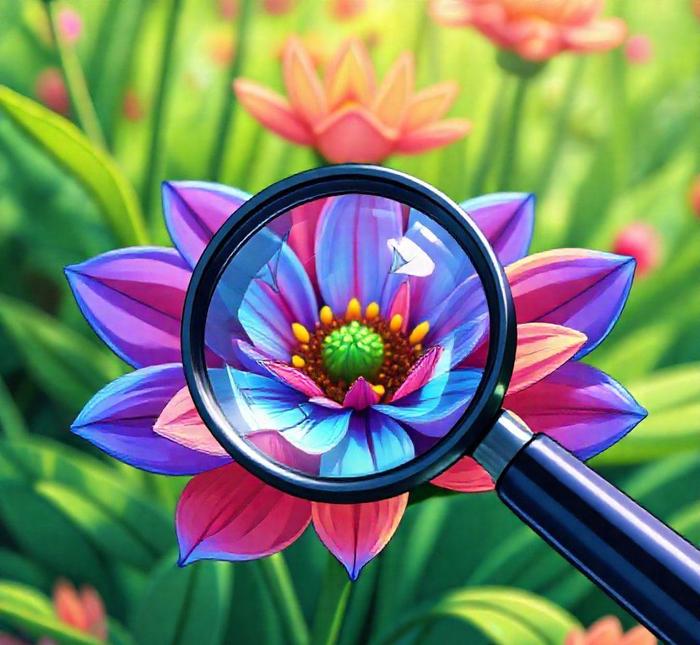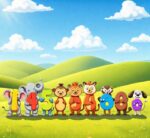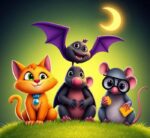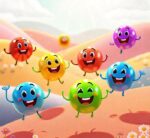- You are here:
- Home »
- words
- » Descriptive Words That Start With Y [LIST]

Descriptive Words That Start With Y [LIST]
Finding the perfect word to describe someone or something can elevate your writing, adding depth and clarity. When looking for descriptive words that start with the letter ‘Y’, the options might seem limited, but they offer a unique and valuable array of terms. These words, whether used to describe physical attributes, emotions, or characteristics, can bring a fresh perspective to your vocabulary. From the warmth of ‘youthful’ to the coolness of ‘yellowish’, this list reveals how versatile and expressive the letter ‘Y’ can be in crafting vivid imagery in your language.
In this article, we’ve compiled a variety of descriptive words beginning with ‘Y’ to enhance your writing and speech. These words can help describe a wide range of subjects, from a person’s appearance and demeanor to natural landscapes and abstract concepts. Whether you’re writing creatively, preparing a report, or simply trying to expand your vocabulary, these words can add that perfect touch of detail. With this list, you’ll be equipped with an array of ‘Y’ words that will make your descriptions stand out.
Descriptive Words That Start With Y
1. yellow
Yellow is a color that evokes warmth, cheerfulness, and brightness. It is often associated with sunlight, happiness, and energy. The color can vary from pale and pastel to bold and intense, bringing a sense of liveliness and optimism to any space or object.
Examples
- The bright yellow flowers bloomed vibrantly across the meadow.
- She wore a yellow dress that shimmered under the sunlight.
- The room was painted in soft yellow tones, making it feel warm and inviting.
2. yearning
Yearning refers to a strong, often deep, emotional desire or longing for something unattainable or distant. It can be a feeling of intense craving or wistfulness for something lost, far away, or still out of reach, invoking a sense of emotional depth and longing.
Examples
- There was a deep yearning in her eyes as she stared at the distant horizon.
- His yearning for adventure led him to travel to faraway lands.
- The song filled the room with a sense of yearning, as if the lyrics were calling out for something more.
3. youthful
Youthful describes characteristics associated with the vigor, energy, and optimism often found in young people. It also refers to the appearance or attitude that embodies freshness, vitality, and the absence of aging, making something feel lively and full of potential.
Examples
- She had a youthful energy that made her seem much younger than her age.
- His youthful enthusiasm for life was contagious, bringing joy to everyone around him.
- The youthful design of the apartment was filled with bright colors and modern furniture.
4. yucky
Yucky is an informal, somewhat childish term used to describe something unpleasant or distasteful, particularly in terms of appearance, smell, or taste. It conveys a sense of disgust and is often used to describe things that are dirty, gross, or unappealing.
Examples
- The food looked yucky, with its unappetizing color and texture.
- I stepped into a puddle of yucky mud and ruined my shoes.
- The smell of the rotting fruit was so yucky that I had to leave the room.
5. yielding
Yielding describes something that gives way or responds to pressure, either physically or metaphorically. It can refer to materials that bend, stretch, or compress under force, or to a person’s willingness to be flexible or accommodating in a situation.
Examples
- The yielding surface of the mattress made it incredibly comfortable to sleep on.
- She was a yielding partner, always willing to compromise in their relationship.
- The soil in the garden was soft and yielding, making it easy to plant the seeds.
6. yawning
Yawning is often associated with a physical reflex that typically occurs when a person is tired, bored, or uninterested. It can also describe a wide or gaping opening, like a yawning chasm, symbolizing vastness or emptiness.
Examples
- He sat there yawning, clearly bored by the lecture.
- The yawning gap between their expectations and reality was causing frustration.
- She was yawning uncontrollably after staying up late the night before.
7. yoga-like
Yoga-like refers to qualities reminiscent of yoga practices, which often emphasize relaxation, flexibility, mindfulness, and balance. This term is used to describe an approach, behavior, or atmosphere that mirrors the tranquility and focused energy typically found in yoga.
Examples
- Her movements were so fluid and graceful, almost yoga-like in their serenity.
- The atmosphere in the room was yoga-like, calm and meditative.
- He approached his work with a yoga-like mindfulness, staying calm under pressure.
8. young
Young is a term that refers to someone or something in the early stages of life or development. It can describe a person, animal, or even an idea that is in its formative, energetic, or less mature phase, often associated with freshness, vigor, and potential.
Examples
- She was still young, with so much of life ahead of her.
- The young child was fascinated by the butterfly fluttering nearby.
- His young appearance made it hard to believe he was already a senior manager.
9. yummy
Yummy is an informal, cheerful word used to describe food that is delicious, flavorful, or highly appetizing. It suggests enjoyment and satisfaction in the taste or aroma of something, often evoking a sense of pleasure or indulgence.
Examples
- The chocolate cake was so yummy that I couldn’t stop eating it.
- She made a yummy dish of spaghetti with a rich tomato sauce.
- The freshly baked cookies smelled so yummy that they attracted everyone in the house.
10. yellowish
Yellowish refers to something that has a slight or pale yellow color. It is often used to describe an object or surface that is not completely yellow but has a hint of yellow, creating a softer or more subdued tone.
Examples
- The leaves had turned yellowish, signaling the arrival of autumn.
- His skin had a yellowish tint due to a mild illness.
- The sunlight cast a yellowish hue across the room, making it feel warm and golden.
11. yodeling
Yodeling is a distinctive vocal technique, often associated with Alpine regions, where a singer rapidly switches between chest voice and head voice. It is used to create a high-pitched, echoing sound that can carry over long distances and is often associated with folk music and traditions.
Examples
- The sound of yodeling echoed through the mountains, adding to the charm of the Swiss landscape.
- He tried his hand at yodeling, though it wasn’t quite as melodic as he had hoped.
- Yodeling is often heard during alpine festivals, where performers display their vocal skills.
12. yellow-bellied
Yellow-bellied typically refers to an animal or creature with a yellowish underbelly. It can also be used metaphorically to describe someone who is considered cowardly or lacking in courage, with ‘yellow’ being a color historically associated with fear.
Examples
- The yellow-bellied bird perched on the fence, singing cheerfully.
- He was called yellow-bellied for his cowardice, unwilling to stand up for what was right.
- A yellow-bellied marmot scurried across the grass, its fur bright and striking.
13. youth
Youth refers to the period in life between childhood and adulthood, typically characterized by growth, energy, and the pursuit of independence. It often symbolizes a time of discovery, self-identity, and the exploration of one’s potential.
Examples
- The youth of today are more connected than ever before through technology.
- His novel captured the exuberance and challenges of youth in a fast-paced world.
- There was a palpable sense of youth in the room, with young artists showcasing their work.
14. yare
Yare describes something that is nimble, agile, or quick to respond. Originally used to refer to a well-handling boat, the term can also be used metaphorically to describe a person or object that is quick, well-prepared, or capable of making precise, efficient movements.
Examples
- The boat was yare and responsive, gliding smoothly through the water.
- The captain praised the yare crew for their swift and efficient actions.
- Her yare temperament made her the perfect leader for the challenging project.
Historical Context

The letter Y has always held a distinctive place in the English language, being one of the least commonly used in comparison to other letters, yet possessing an undeniable richness in its array of meanings. This letter’s usage in descriptive words traces back to Old English, where Y often represented both a vowel and a consonant. It had a historical significance in the development of the language as it was often used interchangeably with other letters like I or J, with its phonetic versatility enriching many of the descriptive adjectives we use today.
One of the most prominent examples of Y‘s historical significance is its role in words that express extremes, whether in terms of appearance, character, or action. Words like youthful and yawning have deep historical roots. Youthful, for instance, not only describes someone who is young but also carries an implication of energy and vitality, often reflecting the exuberant vitality associated with youth across ages. Yawning, too, though seemingly mundane today, once had a more symbolic significance in literature and rhetoric, signifying a metaphorical or literal opening or expanse, suggesting vulnerability or an invitation to the unknown.
Moreover, the use of Y-starting words in descriptions dates back to the ancient and medieval use of allegories, where the features of people, places, and things were often discussed in terms of their symbolic properties. The word yonder, for example, which refers to something at a distance, carries a historical weight from early literature and poetry, invoking a sense of faraway places, idealized settings, and longing, reflective of a more romantic era in storytelling.
Word Origins And Etymology
Many of the descriptive words that begin with Y come from a rich and varied range of linguistic origins, encompassing Old English, Germanic roots, and even borrowing from Latin and Greek. The letter itself, derived from the Greek letter upsilon (Υ, υ), was adapted into the Roman alphabet and eventually incorporated into Old English phonology. The historical journey of the letter Y into descriptive adjectives reflects its dual nature as both a consonant and a vowel.
Take yellow, for instance, one of the most ubiquitous and vivid color words in the English language. It comes from the Old English geolu, which has Proto-Indo-European roots linked to the word ghel- meaning "to shine" or "to gleam." The evolution of yellow from a simple description of color to also encompassing meanings like "bright" or "radiant" demonstrates how the concept of light and vitality becomes deeply interwoven with the word itself.
The word youthful also traces its lineage to Old English, originating from geoguð (meaning youth or young people) and later adapting into the descriptive adjective form. This reflects the notion that a person who is youthful not only appears young but embodies the spirit, energy, and vitality typically associated with youthful years.
Interestingly, while many Y-starting descriptive words in English trace their roots back to Germanic languages, others are influenced by foreign lexicons. Yen, a term used to express longing or desire, originates from the Chinese word yān meaning "a longing" or "yearning," which was incorporated into English via the Japanese language. This borrowing highlights the diverse, cross-cultural exchange that has influenced English’s expansive lexicon of descriptive terms.
Common Misconceptions
Despite the relatively small number of descriptive words that begin with Y, several common misconceptions about them persist. One of the most frequent misunderstandings is the tendency to assume that Y-starting words are somehow rare or archaic. While it is true that English does not have as many Y-starting words compared to other letters like S or C, the words that do begin with Y are rich in character and remain an essential part of the language. Words like youthful, yellow, and yearning remain in frequent use today, challenging the perception of Y-words as obsolete.
Another misconception lies in the confusion between adjectives and nouns in words like youthful. While it’s easy to treat youthful as a noun (e.g., She has a youthful about her), it is, in fact, an adjective that describes a quality or characteristic. This confusion extends to other Y-starting terms, such as yielding, which is often mistakenly thought to refer only to a person’s physical production or output, rather than their capacity to be compliant or flexible.
There is also the misconception that words like yonder and yawning have lost their descriptive potency in modern English. Although these terms have become somewhat less common in everyday conversation, they are still alive in the poetic and literary traditions. Yonder, for example, evokes a sense of place or distance, often used in a romanticized or nostalgic context, and yawning continues to function as a vivid descriptive term for both physical and metaphorical openings.
Conclusion
In conclusion, the letter Y in the English language, while not as widely represented in the lexicon as some other letters, still offers a wealth of descriptive words that are historically significant, rich in etymological roots, and filled with vivid imagery. Whether through color, age, or emotions, Y-starting words like yellow, youthful, yearning, and yonder evoke a spectrum of qualities that continue to resonate in modern usage. Understanding the history and origins of these words helps clarify their current meaning, usage, and nuances, dispelling misconceptions that Y is a letter too infrequent to play a substantial role in the descriptive language. The study of these words offers a window into the evolving nature of English, where even the least-used letters carry immense linguistic power.








